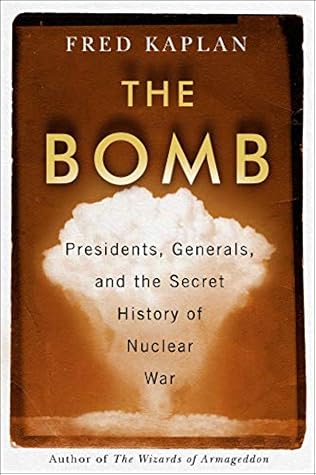More on this book
Community
Kindle Notes & Highlights
by
Fred Kaplan
Read between
March 20 - May 1, 2023
Depending on the assumptions, American fatalities would range from negligible in the best case to 70 percent of the population in the worst. “In thermonuclear war,” Kaysen wrote, “people are easy to kill.”
“General,” Kennedy asked at one point during the briefing, “why are we hitting all those targets in China? As I understand this scenario, this war didn’t start there.” “They’re in the plan, Mr. President,” Lemnitzer matter-of-factly replied.
They wrote in the RAND memo that the case for Selective Attack Options was “not that they are especially appealing,” but rather that they “may be less miserable than the other alternatives under given circumstances.” It was like “playing Russian Roulette with three chambers filled, hardly an enticing prospect for decision-making,” but preferable to the SIOP, which would pull the trigger of a pistol fully loaded.
Kissinger then made a remarkable statement: “Nixon has heard only the SIOP, and if that’s all there is, he won’t do it”—he won’t push the button, won’t use nuclear weapons in a crisis. “To have the only option that of killing 80 million people,” he exclaimed, “is the height of immorality.”
At this point, Stansfield Turner, the CIA director, interjected to ask the officials around the table a fundamental question: What did they think deterred the Soviets the most? Brzezinski replied, “Threats to the population.” Vance agreed. In context, it was an extraordinary response: the senior national security officials were discussing nuclear war in a baroquely intricate fashion, parsing which limited options would most dampen the Soviet leaders’ incentive to go to war—yet, pressed on the matter, the most insistent advocate of these options acknowledged that the most potent dampener was
...more
The answer was 200. In other words, on the Soviets’ radar screens, 200 missiles and 2,000 missiles looked exactly the same. And yet in SIOP’s smallest “limited” attack option, the United States would launch nearly 1,000 missiles. To Soviet air defense officers, this would look like an all-out attack.
Klinger unraveled the mystery of why the SIOP laid down 725 nuclear weapons on the Soviet transportation network. It turned out that JSTPS had decided, for unclear reasons, to launch nuclear weapons against all railroad yards above a certain metric capacity and all railway bridges that stretched for longer than a certain distance. But, as the Defense Intelligence Agency’s logistics specialists told them, this standard was completely arbitrary; it had no bearing on the military value of a target. Some long bridges and large railroad yards weren’t used by the military at all; some very short
...more
When the briefers displayed the chart showing the distinctions among the major attack options—MAO-1, MAO-2, MAO-3, and MAO-4—Bush turned to Cheney and asked, in a calm, no-nonsense tone, “Tell me the difference in the number of people I’m going to kill.”


